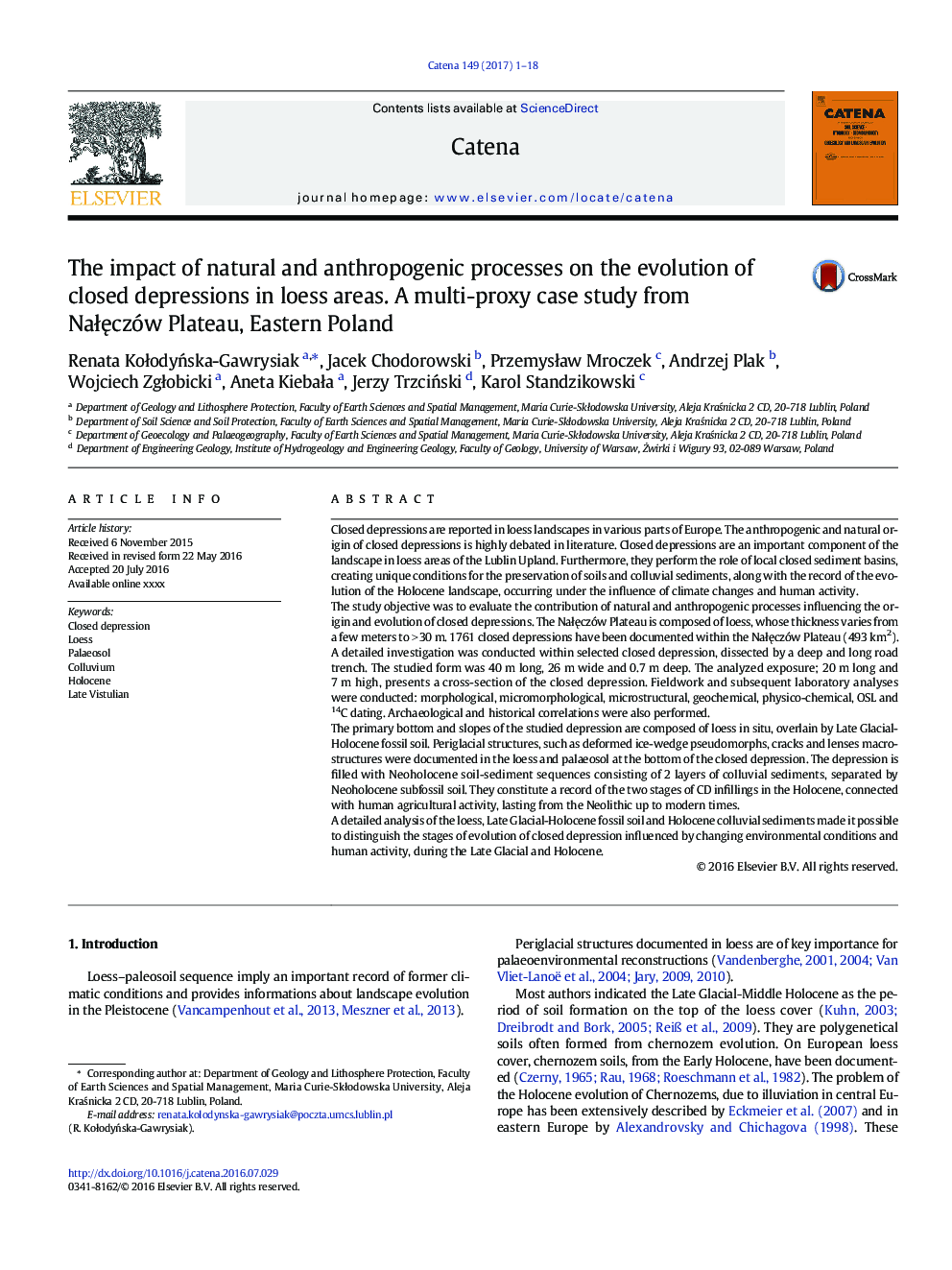| کد مقاله | کد نشریه | سال انتشار | مقاله انگلیسی | نسخه تمام متن |
|---|---|---|---|---|
| 4570843 | 1332079 | 2017 | 18 صفحه PDF | دانلود رایگان |
• The impact of natural processes on the origin of closed depression was documented.
• Thermo-karst processes forming part of the morphogenesis of the loess cover
• Closed depression contain record of the Holocene landscape evolution.
• Human impact on the Holocene evolution of closed depression was documented.
Closed depressions are reported in loess landscapes in various parts of Europe. The anthropogenic and natural origin of closed depressions is highly debated in literature. Closed depressions are an important component of the landscape in loess areas of the Lublin Upland. Furthermore, they perform the role of local closed sediment basins, creating unique conditions for the preservation of soils and colluvial sediments, along with the record of the evolution of the Holocene landscape, occurring under the influence of climate changes and human activity.The study objective was to evaluate the contribution of natural and anthropogenic processes influencing the origin and evolution of closed depressions. The Nałęczów Plateau is composed of loess, whose thickness varies from a few meters to > 30 m. 1761 closed depressions have been documented within the Nałęczów Plateau (493 km2). A detailed investigation was conducted within selected closed depression, dissected by a deep and long road trench. The studied form was 40 m long, 26 m wide and 0.7 m deep. The analyzed exposure; 20 m long and 7 m high, presents a cross-section of the closed depression. Fieldwork and subsequent laboratory analyses were conducted: morphological, micromorphological, microstructural, geochemical, physico-chemical, OSL and 14C dating. Archaeological and historical correlations were also performed.The primary bottom and slopes of the studied depression are composed of loess in situ, overlain by Late Glacial-Holocene fossil soil. Periglacial structures, such as deformed ice-wedge pseudomorphs, cracks and lenses macro-structures were documented in the loess and palaeosol at the bottom of the closed depression. The depression is filled with Neoholocene soil-sediment sequences consisting of 2 layers of colluvial sediments, separated by Neoholocene subfossil soil. They constitute a record of the two stages of CD infillings in the Holocene, connected with human agricultural activity, lasting from the Neolithic up to modern times.A detailed analysis of the loess, Late Glacial-Holocene fossil soil and Holocene colluvial sediments made it possible to distinguish the stages of evolution of closed depression influenced by changing environmental conditions and human activity, during the Late Glacial and Holocene.
Journal: CATENA - Volume 149, Part 1, February 2017, Pages 1–18
